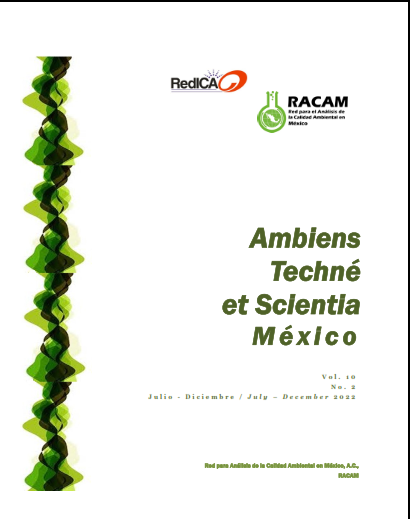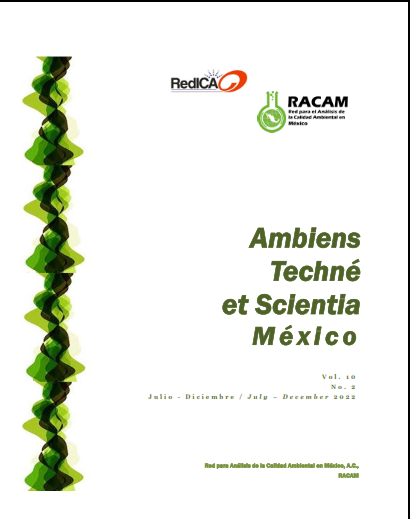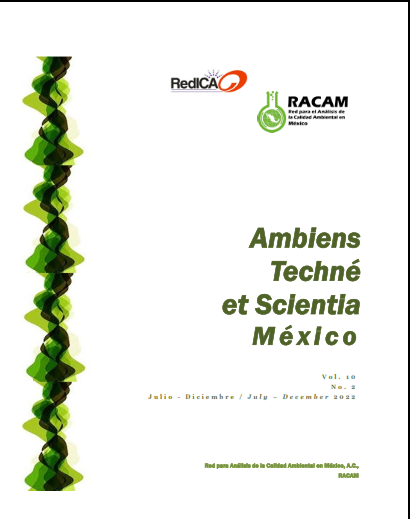Desde Abril 2023*
Vol. 10 No. 2 (2022): Ambiens Techne et Scientia México

Presentation
In this second issue of 2022 we inform you that we continue with the global epidemic of the coronavirus Coronavirus SARS-CoV-2 (calling the disease COVID-19).
In our previous issue, in its first article, the author referred to man-made systems simulating nature known as artificial wetlands (in English for unknown reasons they are called constructed wetlands) and to which an esteemed colleague, Ing. Agrón. Federico Beisso, from France, tells us that in some Latin American countries they are called treatment wetlands.
Precisely in our America, the Aztecs took care of the quality of the Anahuac lakes using the wetlands that proliferated on their banks, which they called popales[1]. These are ecological systems that should be implemented in all small and medium-sized communities since they are friendly to the environment, economical and efficient.
In this issue we will present some contributions that colleagues from Mexico and other latitudes kindly share with us in this regard.
Welcome to this forum of fraternal networks:
Network for Environmental Quality Analysis in Mexico
and
International Network of Environmental Sciences
from the Faculty of Chemistry of the National Autonomous University of Mexico.
The editor-in-chief
[1] Popal, marsh or marshy water deposit that, in the case of the endorheic basin of ancient Anahuac, was stagnant because it had no way out because it was surrounded by mountain ranges. Swamp covered with aquatic vegetation. From potoni, strong smell and palli, mud, zone with odoriferous mud (Luis Cabrera, Dictionary of Aztecisms. Review and ordering: J. Ignacio Dávila-Garibi. Nahua terms: Luis Reyes-García. Latin terms (botanical and zoological classifications): Esteban Inciarte. 5th edition. ISBN 968-867-038-3. Ed. Colofón, S.A., Mexico City, Mexico)








